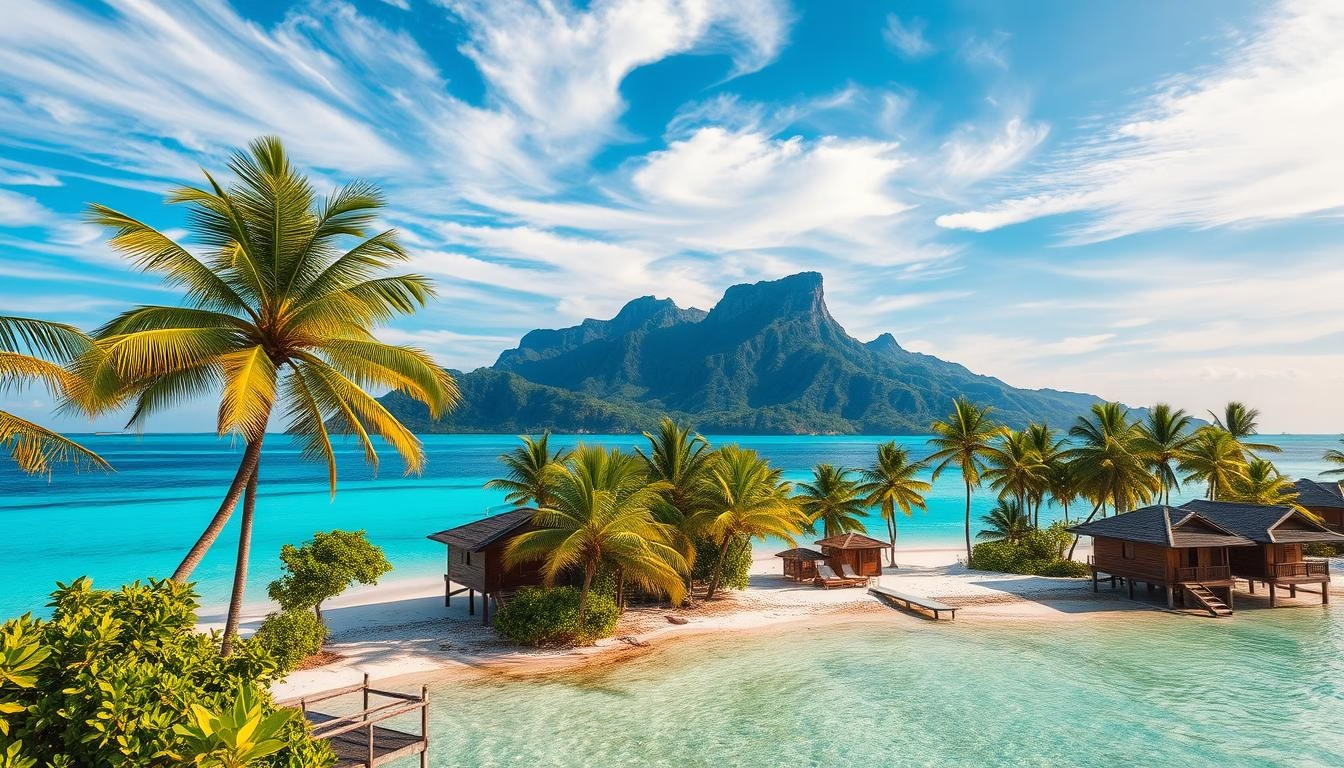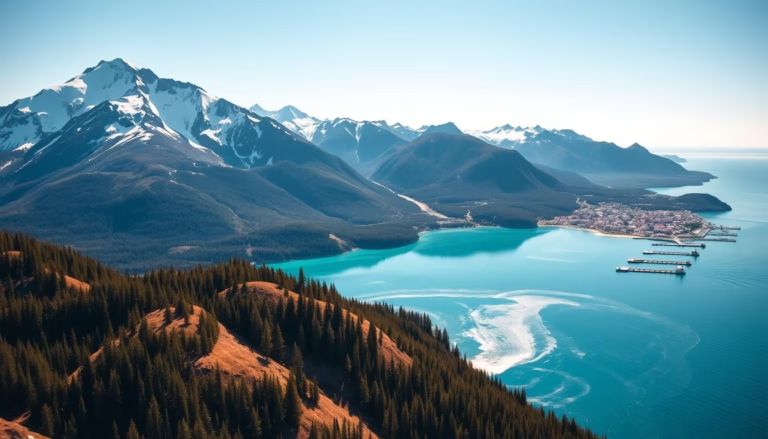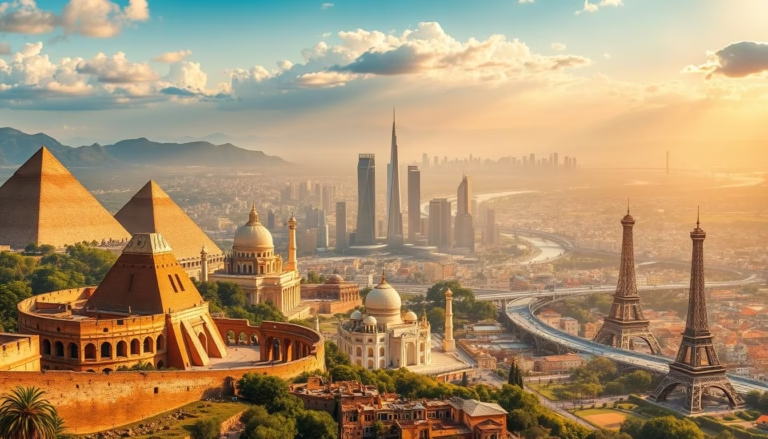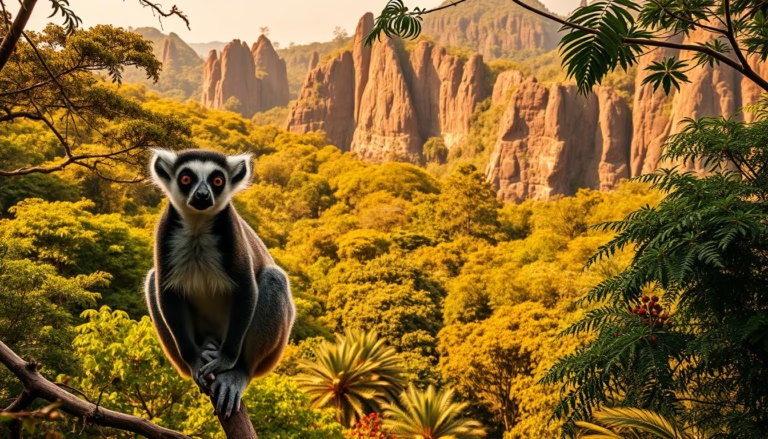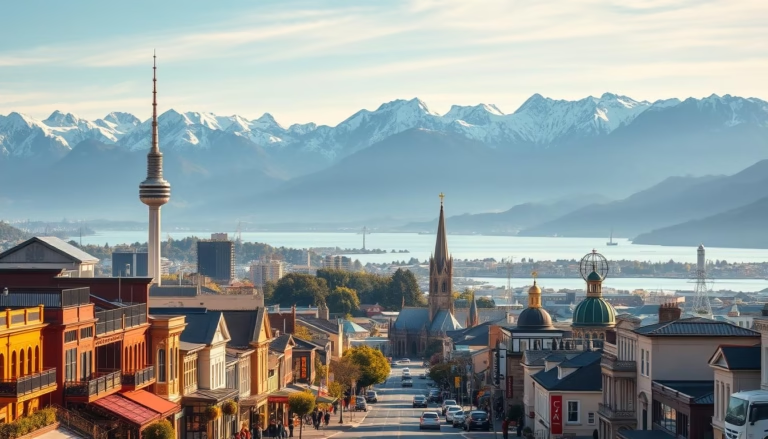Discover the Best Malaysian Islands for Your Dream Vacation
Imagine stepping onto powdery white sands surrounded by emerald waters. Malaysia’s coastline hides over 800 tropical gems, each offering unique adventures. From vibrant coral reefs to lush rainforests, these spots remain refreshingly untouched compared to crowded hotspots like Bali or Phuket.
Whether you crave thrilling jungle hikes or lazy beach days, this archipelago delivers. Diverse marine life—including sea turtles and reef sharks—thrives in crystal-clear waters. Remote atolls like Sipadan attract serious divers, while family-friendly spots like Langkawi mix luxury resorts with natural wonders.
What makes these destinations special? They balance accessibility with authenticity. You’ll find budget-friendly homestays and five-star villas nestled among coconut palms. Local food stalls serve spicy laksa beside world-class seafood restaurants.
Key Takeaways
- Malaysia has over 800 islands with distinct landscapes and activities
- Less crowded than popular Southeast Asian destinations
- Offers options for every budget and travel style
- Home to world-renowned diving sites and wildlife
- Combines modern amenities with untouched natural beauty
Ready to explore? This guide unlocks hidden coves, cultural treasures, and sunset views that rival any postcard. Pack your swimsuit—your ultimate tropical escape starts here.
Introduction to Malaysia’s Island Paradise
Stretching across two coastlines and the South China Sea, this tropical nation offers over 800 landmasses framed by vibrant coral reefs and coconut palms. What sets these destinations apart? You’ll find jungles brushing against turquoise waves and fishing villages preserving centuries-old traditions—all within a single archipelago.
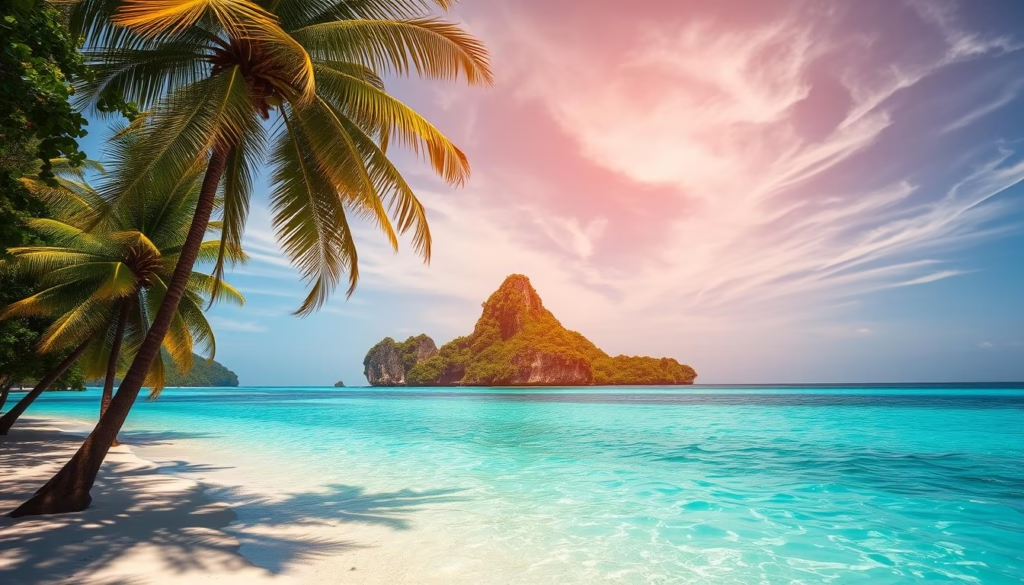
East vs West: Coastal Contrasts
The east coast dazzles with underwater wonders. Islands like Perhentian and Tioman boast visibility up to 30 meters—ideal for spotting parrotfish or blacktip sharks. On the western side, Langkawi’s mangrove forests and duty-free shopping create a different vibe. Both regions share powder-soft sands, but their personalities shine uniquely.
More Than Just Beaches
“You’re not just choosing sand and sun here,” says a marine biologist who’s studied the region for 15 years. “These ecosystems support ancient turtle nesting grounds and rare seagrass beds.” From Borneo’s protected wildlife sanctuaries to Peninsular Malaysia’s hidden coves, every island tells its own story.
Travelers appreciate the mix of accessibility and authenticity. Whether you’re kayaking through bioluminescent waters or learning to cook Nyonya cuisine from local chefs, experiences feel genuine. The comprehensive guide to islands in Malaysia reveals how even popular spots retain their cultural roots.
Accommodations range dramatically too. Sleep in stilted wooden chalets one night, then unwind in cliffside infinity pools the next. This flexibility makes the country perfect for multi-generational trips or solo adventures alike.
Exploring the Best Malaysian Islands
Beyond their picture-perfect shores lies a world teeming with life. Over 60% of these destinations sit within protected marine parks, where colorful clownfish dart through coral mazes and ancient sea turtles glide gracefully. The waters here form part of the Coral Triangle—a global hotspot hosting 76% of all known coral species.
Nature’s Living Laboratories
From May to September, rare hawksbill turtles drag themselves onto moonlit sands to lay eggs. Conservationists work with local communities to protect these nesting sites, offering travelers front-row seats to hatchling releases. “You’re not just observing nature here—you’re witnessing evolution in action,” notes a marine researcher based in Borneo.
Above water, limestone cliffs rise like dragon teeth beside hidden lagoons. Some landmasses feature bubbling mud volcanoes, while others hide cave systems filled with swiftlets. These geological wonders create hiking trails where you might spot monitor lizards or hornbills between swim breaks.
What keeps these ecosystems thriving? Strict limits on development mean you’ll find more palm trees than high-rises. Many spots ban single-use plastics, and dive operators teach reef-safe practices. This careful balance lets visitors enjoy vibrant coral reefs without harming their fragile beauty.
“Our islands are classrooms without walls—every snorkel mask becomes a window into marine biology.”
Island Highlights: Langkawi, Tioman, and Perhentian Islands
Three distinct archipelagos define Malaysia’s coastal magic. Each offers signature landscapes and adventures while preserving their natural charm. Let’s explore what makes these destinations stand out.
Unique Features and Top Attractions
Langkawi’s 99-island cluster impresses with rainforest-covered limestone peaks. The UNESCO Global Geopark reveals ancient rock formations and hidden waterfalls. Don’t miss the gravity-defying Sky Bridge – a 410-foot curved walkway offering 360-degree jungle-and-ocean vistas.
The Perhentian Islands deliver raw tropical simplicity. With no roads or cars, you’ll stroll sandy paths between beachfront cafes. Turtle sightings occur daily near Coral Bay, where waters stay transparent year-round.
Tioman earned fame through Time Magazine’s 1970 feature, and it still dazzles. Juara Beach’s golden curve hosts turtle conservation programs, while Asah Waterfall’s jungle pool invites refreshing dips after hikes.
Water Activities, Diving, and Snorkeling Spots
Langkawi shines for coastal exploration. Join mangrove kayak tours to spot brahminy kites, or cruise between islets like Dayang Bunting’s freshwater lake. While visibility varies, diving near Payar Island reveals occasional reef sharks.
The Perhentians boast Malaysia’s clearest waters. Dive sites like Sugar Wreck swarm with barracuda schools, while snorkeling at Shark Point lets beginners swim with blacktip reef sharks. Night dives showcase glowing plankton displays.
Tioman balances underwater and land adventures. Sailfish Rock’s drift dives thrill experienced divers, while Salang Beach’s house reefs teem with clownfish. Post-snorkel, trek through Tekek Village’s jungle trails to discover hidden waterfalls.
“In Perhentian, you’ll see more sea turtles than scooters – that’s the beauty of car-free islands.”
Hidden Gems: Pangkor, Kapas, and Rawa Islands
Venture beyond the well-trodden paths to discover three underrated treasures. These destinations trade tourist crowds for quiet coves and cultural immersion, each offering a distinct flavor of coastal life.
Local Experience and Secluded Beaches
Pangkor Island blends convenience with authenticity. Just four hours from Kuala Lumpur, you’ll find fishing villages serving grilled stingray at wooden docks. Rent a scooter (international license required) to explore jungle trails leading to empty bays where monitor lizards sunbathe.
Kapas Island lives up to its “Cotton Island” nickname with pillowy sands and zero distractions. Pack cash—there are no ATMs—and embrace the simplicity. Days here mean snorkeling in translucent waters or napping in hammocks strung between palms.
Rawa Island redefines luxury with powder-white shores and exclusive resorts. While prices start at €250 per night, you’re paying for private coral gardens and sunset views untouched by crowds. One guestbook entry reads: “Felt like we rented the whole place for ourselves.”
| Island | Vibe | Unique Feature | Budget Tip |
|---|---|---|---|
| Pangkor | Cultural immersion | Scooter exploration | $5 seafood meals |
| Kapas | Digital detox | Empty beaches | Bring cash |
| Rawa | High-end escape | Private snorkeling reefs | Book early for deals |
These spots prove paradise comes in many forms. Whether you crave street food feasts or champagne toasts at water’s edge, there’s a place here that fits your idea of relaxation.
Adventure Awaits: Diving, Coral Reefs, and Marine Life
Beneath the surface of turquoise waves lies a living kaleidoscope. Schools of neon-colored fish swirl around coral towers while sea turtles glide past like underwater hot air balloons. This vibrant world thrives in protected zones where conservation meets exploration.
Scuba Diving Hotspots and Snorkeling Guides
Sipadan Island tops every diver’s bucket list for good reason. Strict daily permits protect encounters with swirling barracuda tornados and hammerhead sharks patrolling deep walls. Visibility here often exceeds 40 meters, revealing coral gardens teeming with parrotfish and clown triggerfish.
Redang’s nine-island marine park offers gentler adventures. Snorkelers float above brain corals while blacktip reef sharks cruise below. Night dives reveal glowing plankton constellations—nature’s own light show.
The Perhentian Islands combine accessibility with underwater magic. Shallow reefs near Coral Bay let beginners swim alongside green turtles. Local dive shops offer PADI courses where you’ll earn certification surrounded by angelfish and moray eels.
“Diving here feels like entering a National Geographic special—every creature plays its part in the ecosystem.”
For deep-sea thrills, Layang Layang’s remote atoll delivers. Advanced divers explore vertical walls where whale sharks occasionally pass through. The island’s isolation means you’ll share the water with more marine life than people.
Whether you’re floating face-down with a snorkel or descending with scuba gear, these waters promise encounters that spark lifelong memories. Pack your sense of wonder—the reefs are waiting.
Luxury Versus Budget Island Experiences
Coastal getaways here cater to every wallet without compromising magic. You’ll find sunset cocktails served on silver platters and spicy satay sizzling at beachside stalls—often on the same stretch of sand.
Exclusive Resorts and Private Getaways
Pangkor Laut Resort sets the standard for luxury, occupying an entire private island. Guests wake to hornbills singing outside villas perched above private coves. Rawa Island’s all-inclusive resorts start at €250/night per person, offering direct reef access from your balcony.
Affordable Trips and Street Food Delights
The Perhentians prove paradise comes cheap. Basic fan-cooled huts cost €25/day, while three-day diving packages run €100. Langkawi’s night markets serve grilled squid and coconut shakes for under €2—meals bursting with flavor, not price tags.
What makes this place special? You can blend both worlds in one trip. Spend mornings snorkeling off budget-friendly Kapas Island, then helicopter to a luxury villa for sunset massages. Local food stalls ensure even five-star travelers taste authentic flavors.
“Our islands don’t judge wallets—they reward curiosity. A fisherman’s grilled catch often rivals resort tasting menus.”
From rustic beach camps to overwater bungalows, these destinations deliver something everyone. Smart planning lets you craft unforgettable experiences without emptying savings—or missing out on life’s finer moments.
Travel Tips: Best Time, Getting There, and Local Cuisine
Timing your tropical escape requires balancing sunshine and serenity. Coastal regions see shifting monsoon patterns, making some months better for snorkeling while others offer quieter beaches. Local festivals and wildlife events add colorful layers to trip planning.
Ideal Seasons and Weather Considerations
March through October brings dry skies to the mainland‘s west coast. This best time for Langkawi visits means calm seas for boat trips. Eastern destinations like Perhentian shine April-September with glassy waters perfect for diving.
November-February sees rainier weather, but fewer crowds. Travelers during this time enjoy lush landscapes and lower prices—just pack quick-dry clothes.
Transportation and Ferry/Flight Options
From Kuala Lumpur, reach eastern coasts via 1-hour flights or 6-hour buses. Ferries depart daily from ports like Kuala Besut—book boat tickets online to secure morning departures.
Western archipelagos connect seamlessly. Langkawi’s international airport welcomes direct flights, while Pangkor Island sits 3.5 hours by road from the capital. Always confirm ferry schedules during monsoon time.
Pro tip: Combine land and sea journeys. Fly into Kuala Lumpur, then take a scenic train ride to coastal jump-off points. Local food stalls at docks serve spicy mee goreng while you wait for boat transfers—a tasty start to your adventure.
